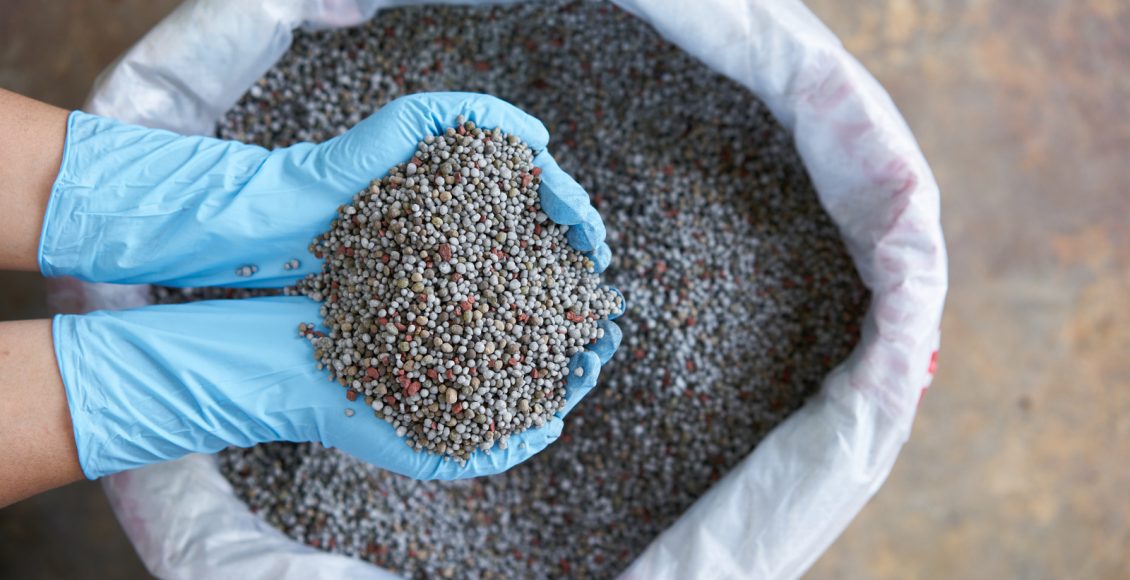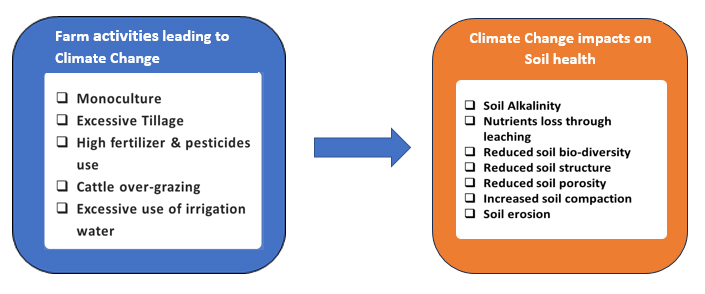
Specialty Fertilizer: A Contribution towards Mitigation of Climate Change Effects in Soil
Climate change has been found to have a cyclic effect on soil health which means activities such as excessive tillage, practicing monoculture with staple crops like rice & wheat, high fertilizer and pesticide use, and cattle overgrazing has led the soil’s stable carbon to convert into carbon dioxide. The carbon dioxide emitted eventually results in increased temperature and erratic rainfall again. When the atmospheric temperature increases, the plant-required nutrients migrate from the root zone to the surface (alkalinity), reducing the plant’s ability to absorb these nutrients. Similarly, soil nutrients are leached away to the water bodies during heavy rainfall. Additionally, climate change also adversely affects soil biodiversity, structure, porosity, and compaction, leading to soil erosion and deterioration of overall soil health. These problems have led to the growing need for high-efficiency fertilizers.

How can specialty fertilizers be helpful?
Fertilizer production generates around 1.4% of annual CO2 emissions. Out of which, 130 Mt CO2 is used in only urea manufacturing, and the use of synthetic nitrogen (N) fertilizers alone accounts for 8.3% of farm-gate emissions in 2019 [1] [2]. Specialty fertilizers can help reduce these emissions as they can be used as an efficient supplement and reduce the use of bulk fertilizers like urea. The history of specialty fertilizer in India dates to the 1980s when Indian fertilizer companies started R&D work on specialty products. IFFCO was the first Indian company to develop urea super granule (USG), a slow-release nitrogenous fertilizer. The specialty fertilizers include several segments like controlled-release fertilizers (CRF), liquid fertilizers, slow-release fertilizers (SRF), and water-soluble fertilizers (WSF). Specialty fertilizers help in limiting nutrient seepage into groundwater and runoff into lakes and rivers (due to their increased solubility) and reduce the total fertilizer use by 20% to 30% [3]. As claimed by ICL Group, one of the leading global specialty fertilizer manufacturing companies, CRFs have the potential to lower leaching rates by 55%, denitrification rates by 40%, and volatilization rates by 40% [4].
Specialty fertilizers help to increase nutrient uptake because the ratio of nutrients can be adjusted and delivered based on the plant’s nutrient requirements at a particular stage of growth. The deficient nutrients can be ‘topped up’ (foliar applied) during critical stages of growth (in the case of WSFs) or during periods of stress such as heat or drought[5]. Specialty fertilizers also include additives and soil amendments that improve handling and performance in the field. They also help to improve soil microbial activity as some specialty products have a combination of organic matter such as humic acids, biochar, biosolids, and agricultural residues.
Way Forward
Government schemes like Soil Health Cards are likely to increase applications of stage & site-specific specialty fertilizers in India. However, only sincere on-ground implementation can help meet the desired end results. To encourage the use of specialty fertilizers, the strengthening of the soil testing infrastructure in rural areas is required, where farmers can get GPS-based data for soil fertility mapping reflecting both the quantity and deficiency of macro and micronutrients. Secondly, all the vital elements of the Pradhan Mantri Krishi Sinchayi Yojana (PMKSY), like District Irrigation Plans (DIP), need to be extended to the northern states like U.P, Punjab, Bihar & WB, as these states have insignificant adoption of drip irrigation leading to low consumption of specialty fertilizers. ICAR and SAUs are required to conduct more assessment studies on various coating technologies for enhanced solubility like polymer coating or resin coating technology which will help domestic specialty fertilizer industries to have a competitive edge over the global players. Also, State Agri-Departments in collaboration with the specialty fertilizer manufacturing companies can initiate extension initiatives to raise awareness about the benefits of specialty fertilizer in particular areas where there are price-sensitive farmers. As only 16% of the demand for specialty fertilizer in India is met by domestic production, there is an opportunity for more private companies to cater to the growing market of high-efficiency products for sustainable crop production.
In Asia Pacific, countries like China, India, Japan, and Malaysia are major consumers of specialty fertilizers due to increased domestic consumption and exports. Out of these countries, India is the second largest producer of horticultural crops which require micronutrients and trace elements for increased productivity. The Indian agriculture sector’s increased focus on export of high-value crops with enhanced quality to meet international standards can drive specialty fertilizer to play a pivotal role. This makes for a high percentage growth (6.97% CAGR from the year 2016-2028) opportunity for specialty fertilizers in the country. Similarly, with drip irrigation being extended from the current states like Maharashtra, AP, and Gujarat (97%) to other states, large markets for specialty fertilizers will also emerge, which will make India-based specialty fertilizers companies focus their marketing strategies to expand their businesses alongside making the specialty fertilizer growth more promising in the years to come.
References
Q&A: What does the world’s reliance on fertilisers mean for climate change? – Carbon Brief
https://doi.org/10.1038/s41598-022-18773-w
Controlled Release Fertilizers
The-Future-of-Specialty-Fertilizers-in-the-GCC.pdf (gpca.org.ae)
Author

Connect with Authors at: E-mail agribusiness@sathguru.com
 Grow Beyond
Grow Beyond 

